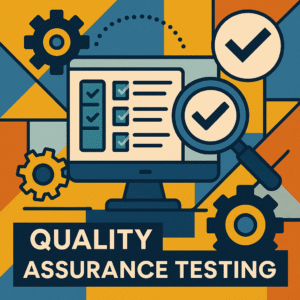CI/CD Pipeline: Best practices for optimizing the process
Agile methodologies teach breaking down of software development into smaller tasks known as “User Stories”. This has enabled early feedbacks which are useful for aligning the features with market needs. With the widespread adoption of agile practices, teams are able to deliver functional software in smaller iterations.
Continuous Integration (CI) is the practice of checking-in the code regularly. Each feature is integrated and tested several times a day from a shared code base. Though it gave a push for many smaller and frequent releases, test deployment and releases got strained, which ultimately affected the end goal.

Jez Humble’s breakthrough book, Continuous Delivery: Reliable Software Releases through Build, Test, and Deployment Automation, talks about treating the entire software lifecycle as a single process—and one that could be automated. While agile addresses the needs of the developers, an investment in DevOps initiatives and Continuous Delivery offers businessesmuch higher returns.
How to do it right?
For selecting the right processes to automate, always ask yourself “Does this need to be automated now?” Following checklist will give you the answer:
- How frequently is the process or scenario repeated?
- How long is the process?
- What people and resource dependencies are involved in the process? Are they causing delays in CI/CD?
- Is the process error-prone if it isn’t automated?
CI/CD is not just about the tools
If you’re looking at the tools without thinking about the users, processes and the company structure, your CI/CD is never going to succeed. Implement a process using the tools, not the other way around. It’s crucial to understand the process and combined requirements of the organization before choosing the right set of tools to fulfill technical requirements.
Seamless coordination between CI and CD
CI feeds CD. Toughest aspect of CI/CD is the human factor involving collaboration between various teams – development team, quality assurance team, operations team, scrum masters etc. Collaboration and communication cannot be automated. To measure the level of coordination, benchmark your CI/CD processes against best in the business.
Keep the goal in sight
Design a meaningful dashboard by assessing what data everyone wants and establish a standard narrative for what that data means. Don’t obsess over substance at the expense of appearance. Progressive assessment is important before metrics and dashboards. CI/CD is ultimately essential because it meets business goals. Failed releases leads to customer dissatisfaction, decrease in revenues and increase churn.
CI/CD is not possible without continuous testing. In order to build quality software, we need to adopt different types of tests—both manual and automated—continually throughout the delivery process. CloudQA automates your regression testing, cross browser testing, load testing, continuous monitoring and seamlessly fits into your CI/CD pipeline by providing out of the box integration with CI/CD tools like Jenkins, CircleCI, TravisCI, JIRA etc.
LIKE THIS POST SHARE IT WITH YOUR FRIENDS
RECENT POSTS
Guides

How To Select a Regression Testing Automation Tool For Web Applications
Regression testing is an essential component in a web application development cycle. However, it’s often a time-consuming and tedious task in the QA process.

Switching from Manual to Automated QA Testing
Do you or your team currently test manually and trying to break into test automation? In this article, we outline how can small QA teams make transition from manual to codeless testing to full fledged automated testing.

Why you can’t ignore test planning in agile?
An agile development process seems too dynamic to have a test plan. Most organisations with agile, specially startups, don’t take the documented approach for testing. So, are they losing on something?

Challenges of testing Single Page Applications with Selenium
Single-page web applications are popular for their ability to improve the user experience. Except, test automation for Single-page apps can be difficult and time-consuming. We’ll discuss how you can have a steady quality control without burning time and effort.

Why is Codeless Test Automation better than Conventional Test Automation?
Testing is important for quality user experience. Being an integral part of Software Development Life Cycle (SDLC), it is necessary that testing has speed, efficiency and flexibility. But in agile development methodology, testing could be mechanical, routine and time-consuming.






